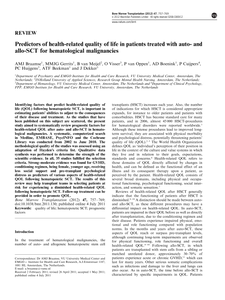Bisphosphonates (BPs) are widely used in the treatment of osteolytic bone disease associated with multiple myeloma, and have been demonstrated to exert antitumor effects both in vitro and in vivo. However, the precise molecular mechanisms involved in the direct antitumor effects of BPs in vitro are not known. Nitrogen-containing BPs, such as risedronate (RIS), act by inhibiting protein prenylation. A phosphonocarboxylate analogue of RIS, 3-PEHPC, has previously been shown in osteoclasts and macrophages to specifically inhibit prenylation of Rab GTPases. The aim of this study was to identify the molecular targets of RIS and 3-PEHPC in human myeloma cells and to determine the cellular effects of selective inhibition of Rab prenylation by 3-PEHPC as compared to nonspecific inhibition of protein prenylation by RIS in human myeloma cells. RIS dose-dependently inhibited prenylation of both Rap1A and Rab6, whereas 3-PEHPC only inhibited Rab6 prenylation. Both RIS and 3-PEHPC dose-dependently increased apoptosis in human myeloma cells. RIS induced an accumulation of cells in the S-phase of the cell cycle, associated with inhibition of DNA replication. In contrast, 3-PEHPC did not cause cell-cycle arrest. Furthermore, geranylgeraniol could prevent inhibition of prenylation, induction of apoptosis, and cell-cycle arrest in response to RIS, but not inhibition of Rab prenylation and apoptosis induced by 3-PEHPC, consistent with specific inhibition of Rab geranylgeranyl transferase by 3-PEHPC. In conclusion, our studies demonstrate that selective inhibition of Rab prenylation induces apoptosis, but not S-phase arrest, thus identifying distinct molecular pathways that mediate the antimyeloma effect of nitrogen-containing BPs. © 2006 Wiley-Liss, Inc.
DOCUMENT
Patients with a hematologic malignancy increasingly prefer to be actively involved in treatment decision-making. Shared decision-making (SDM), a process that supports decision-making in preference-sensitive decisions, fits well with this need. A decision is preference sensitive when well-informed patients considerably differ in their trade-offs between the pros and cons of one option, or if more equal treatment options are available, including no treatment. SDM involves several steps: the first is choice talk, where the professional informs the patient that a decision needs to be made between the various relevant options and that the patient's opinion is important. The second is option talk, where the professional explains the options and their pros and cons. In the third step, preference talk, the professional and the patient discuss the patient's preferences. The professional supports the patient in deliberation. The final step is decision talk, where the professional and patient discuss the patient's decisional role preference, make or defer the decision and discuss possible follow-up.
DOCUMENT

Patients with a hematologic malignancy increasingly prefer to be actively involved in treatment decision-making.1,2 Shared decision-making (SDM), a process that supports decision-making in preference-sensitive decisions, fits well with this need. A decision is preference sensitive when well-informed patients considerably differ in their trade-offs between the pros and cons of one option, or if more equal treatment options are available, including no treatment. SDM involves several steps: the first is choice talk, where the professional informs the patient that a decision needs to be made between the various relevant options and that the patient's opinion is important. The second is option talk, where the professional explains the options and their pros and cons. In the third step, preference talk, the professional and the patient discuss the patient's preferences. The professional supports the patient in deliberation. The final step is decision talk, where the professional and patient discuss the patient's decisional role preference, make or defer the decision and discuss possible follow-up.3,4
DOCUMENT

Identifying factors that predict health-related quality of life (QOL) following hematopoietic SCT, is important in estimating patients’ abilities to adjust to the consequences of their disease and treatment. As the studies that have been published on this subject are scattered, the present study aimed to systematically review prognostic factors for health-related QOL after auto- and allo-SCT in hematological malignancies. A systematic, computerized search in Medline, EMBASE, PsycINFO and the Cochrane Library was conducted from 2002 to June 2010. The methodological quality of the studies was assessed using an adaptation of Hayden's criteria list. Qualitative data synthesis was performed to determine the strength of the scientific evidence. In all, 35 studies fulfilled the selection criteria. Strong–moderate evidence was found for GVHD, conditioning regimen, being female, younger age, receiving less social support and pre-transplant psychological distress as predictors of various aspects of health-related QOL following hematopoietic SCT. The results of this review may help transplant teams in selecting patients at risk for experiencing a diminished health-related QOL following hematopoietic SCT. Follow-up treatment can be provided in order to promote QOL.
DOCUMENT

Hematological malignancies and treatment with hematopoietic SCT are known to affect patients’ quality of life. The problem profile and care needs of this patient group need clarification, however. This study aimed to assess distress, problems and care needs after allo- or auto-SCT, and to identify risk factors for distress, problems or care needs. In this cross-sectional study, patients treated with allo-SCT or auto-SCT for hematological malignancies completed the Distress Thermometer and Problem List. Three patient groups were created: 0–1, 1–2.5 and 2.5–5.5 years after transplantation. After allo-SCT, distress and the number of problems tended to be lower with longer follow-up. After auto-SCT, distress was highest at 1–2.5 year(s). Patients mainly reported physical problems, followed by cognitive-emotional and practical problems. A minority reported care needs. Risk factors for distress as well as problems after allo-SCT included younger age, shorter time after transplantation and GVHD. A risk factor for distress as well as problems after auto-SCT was the presence of comorbid diseases. Up to 5 years after auto-SCT or allo-SCT, patients continue to experience distress and problems. Judged by prevalence, physical problems are first priority in supportive care, followed by cognitive-emotional and practical problems.
DOCUMENT
